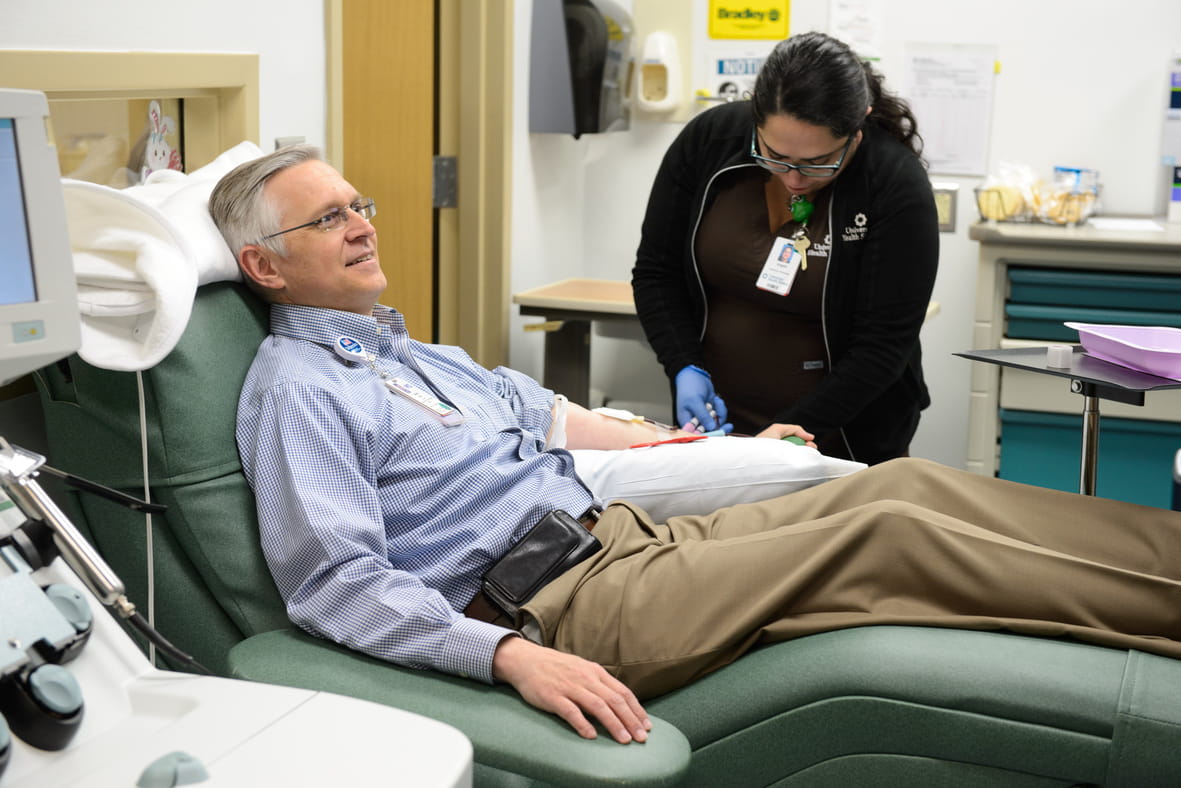Are you feeling under the weather? Unfortunately, this time of year, it could be any number of things.
Here’s how to differentiate between illnesses and recognize when it’s time to seek medical care.
Gastrointestinal (GI) Virus
Norovirus
The norovirus is a highly contagious stomach illness. It spreads by direct contact with an infected person, like sharing food or drinks. You can also catch it by touching surfaces that an infected person has touched, followed by touching your mouth.
Symptoms of the norovirus include:
- Nausea
- Vomiting
- Diarrhea
- Stomach cramps
- Fatigue
- Low-grade fever
- Chills
- Headache
- Body aches
There's no treatment for norovirus. People typically begin to feel better within two days of the symptoms starting. A sign that you are improving is being able to keep fluids down.
The key to a good recovery is to stay hydrated. If your symptoms worsen, you experience a high fever or shortness of breath or are unable to keep any fluids down, consider seeking medical attention.
How to reduce risk of infection
In order to reduce your risk of infection, Dr. Jason Bowling, chief epidemiologist at University Health, encourages regular hand hygiene with soap and water, especially before eating or drinking.
The Difference Between Respiratory Viruses
Influenza
Better known as the flu, influenza is the most serious of the cold-weather bugs that circulate in the fall and winter. Flu season typically starts around October and can last through May.
Symptoms of the flu include:
- Fever
- Headache
- Body aches
- Severe fatigue
- Chills
- Sore throat
- Dry cough
The hardest hit are often young children, seniors, pregnant women or those with chronic illnesses. If you have difficulty breathing, a fever over 100.4°F, chest or stomach pain, dizziness and confusion, or severe and persistent vomiting, you should consider seeking medical attention. Without the proper care and treatment, complications can worsen.
As always, the best way to prevent the flu is to get a flu shot every year. Even if the vaccine this year is not as effective, it will lessen the flu’s severity and keep you out of the hospital.
Respiratory syncytial virus (RSV)
Respiratory syncytial virus (RSV) is a common respiratory virus that infects the lungs, but can also affect the nose and throat.
Symptoms of RSV include:
- Runny nose
- Decrease in appetite
- Coughing
- Sneezing
- Fever
- Wheezing
The RSV vaccines available are only for mothers who are pregnant and adults 60 years and older. If you are ineligible for the vaccine, symptoms typically resolve on their own within about a week or two.
COVID-19
By now, many of us are well-versed in recognizing symptoms of COVID-19 and knowing when to get tested. Symptoms of COVID-19 can include:
- Fever or chills
- Cough
- Shortness of breath or difficulty breathing
- Fatigue
- Muscle or body aches
- Headache
- New loss of taste or smell
- Sore throat
- Congestion or runny nose
- Nausea or vomiting
- Diarrhea
These symptoms may be similar to symptoms of the flu or a cold, so it is important to get tested for and vaccinated against COVID-19.
Other Reasons You May Feel Sick
Cold
A long list of other respiratory viruses (rhinovirus, enterovirus, adenovirus, parainfluenza and more) also circulate this time of year, and often wind up falling under the umbrella phrase of “colds.”
Symptoms for colds vary, but often include:
- Runny nose
- Congestion
- Sneezing
- Coughing
- Sore throat
Unlike the flu, these viruses rarely lead to severe complications and recovery is often quicker. Over-the-counter medications can help ease symptoms of a cold, along with plenty of rest and fluids.
Allergies
Allergy symptoms occur when the body mistakes harmless substances like dust or pollen for germs and attacks them as an immune response, just as when fighting viruses or other pathogens. This causes your body to release substances such as histamine, which results in inflammation.
Symptoms of allergies usually include:
- Runny nose
- Sneezing
- Itchy and watery eyes
- Coughing
- Fatigue
For San Antonio residents, the timing of “cedar fever,” an allergic reaction to the Mountain Cedar tree commonly found in South Texas, overlaps with much of the cold and flu season.
A number of treatment options are available, including:
- Nasal rinses
- Antihistamines
- Decongestants
- Nasal steroids
- Allergy shots
Strep
Strep throat is caused by a bacteria and starts very quickly. Symptoms include:
- Pain when swallowing
- Swollen lymph nodes
- Fever
- Tiny red spots on the roof of the mouth
- Red and swollen tonsils, sometimes with white patches or streaks of pus
Strep doesn't cause a runny nose, cough or hoarseness, so if you have these symptoms, it likely isn't strep.
When to Go to the Doctor
"The warnings for severe illness are having chest pain, chest pressure, tightness in your chest, shortness of breath, particularly at rest ... those are all signs that your respiratory illness is more than just a mild illness and you need to get some medical care," Dr. Bowling said.
Sudden symptoms of confusion, having trouble remembering things or having difficulty staying awake are also signs of severe illness and need to be checked out.
Avoid Overwhelming the ER
Dr. Bowling said emergency rooms are overflowing right now with cases of respiratory viruses. You should try to see your primary care provider or go to a walk-in clinic instead of going to the ER.
"Emergency rooms throughout the South Texas region are really busy right now. They are busy on top of the fact that respiratory viruses are up," Dr. Bowling said.
How to Prevent Infection
Dr. Bowling has some tips on how to prevent getting sick with a respiratory virus.
- Get your COVID-19 and flu vaccinations if you haven’t already
- Wash your hands frequently – and teach your children to do the same
- Cover coughs and sneezes with the fold of your arm
- Stay home when you’re sick
At University Health pharmacies, we offer flu and COVID-19 vaccinations on a walk-in basis. Find a pharmacy near you.





